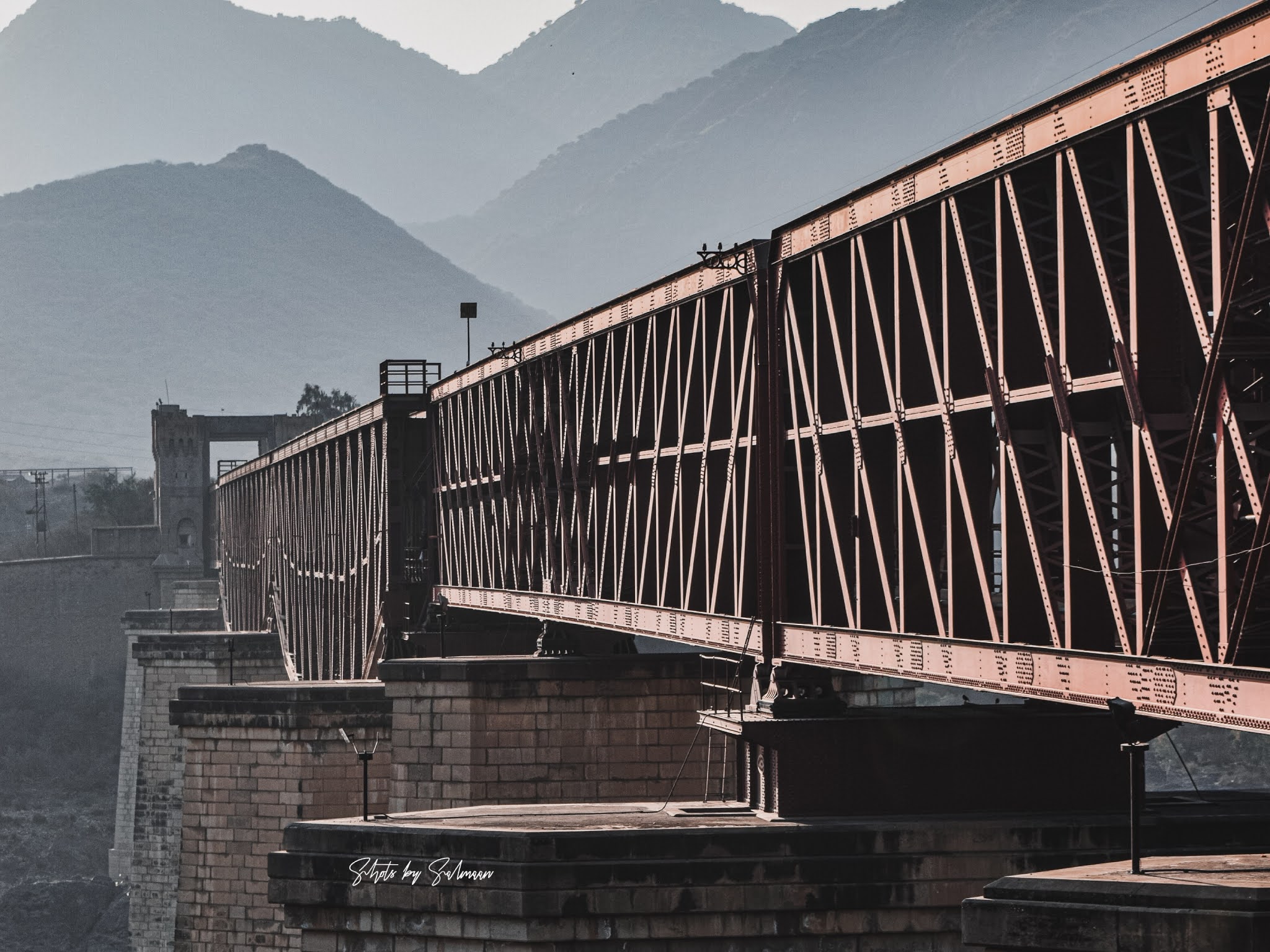In Rudyard Kipling's famous novel Kim, the Grand Trunk Road is described as being “the backbone of all Hind”. The road has witnessed so much history. Along this short stretch, there is the Gandharan capital, a holy Sikh site, Moghul gardens, and the spot where Alexander crossed the Indus.
Centuries later, the hustle and bustle of now an industrial hub still echoes an untold story; we'll be witnessing a fraction of it – the Grand Turk Road to Attock.
Our journey begins with an unexpected phone call. The Government of Pakistan decided to promote the cultural side of Attock through a campaign titled, Discover Attock. All things aside, it was refreshing seeing the youth marking top seats and taking such initiatives. The answer was “Definitely!”.
Invitees and photographers gathered at the A. D. C. Office [Asad Ullah; 2021], Hasan Abdal – a city in Attock, located 40 km northwest of the country's capital city, Islamabad. Hasan Abdal is an interesting spot with a collection of buildings, the most important of which is the gurdwara called Panja Sahib (the Temple of Guru's Palm).
 |
| Gurdwara Panja Sahib © Usman Khan |
The tale is told that Guru Nanak and his disaster-prone disciple, Mardana, were passing the area when Mardana became thirsty. The Guru sent him to the summit of a nearby hill to ask Baba Wali Kandhari who lived there, for water. Baba Wali Kandhari declined to help and three times in all Mardana labored up the hill and back. On the third occasion the Guru struck the ground with his staff and a spring of water burst forth. Meanwhile, Baba Wali Kandhari discovered that he no longer had water in his well.
He was so angry that he hurled a large boulder at the Guru and Mardana, and the Guru stretched out his hand and stopped it. The area has been enclosed so it is impossible to see how large the boulder is, but the palm print on it is easily visible.
 |
| Ornate jharokha in Gurdwara Panja Sahib © Mian Khan |
The other buildings in the complex are kitchens and hostels where pilgrims stay. “Sikhs come here for the festival of Baisakhi on 13 April”, told a Sikh teenager visiting the holy site all the way from Peshawar. Baba Wali Kandhari's shrine is on the hilltop and it is possible to visit it. Adjacent to the gurdwara is a mosque where Baba Wali Kandhari is said to have fasted for 40 days. The rear side of the gurdwara features an old Hindu temple.
Nearby is a Moghul tomb which according to Jehangir was that of a courtier of Akbar's day. There are a couple of pools, one of which contain fishes. They are believed to be those mentioned by Jehangir in his Tuzuk: the emperor caught the fish and put gold rings or pearls in their mouths and let them go again.
Five-minute walk through the “Hakeemon ka Maqbara”, or tomb of the hakims and you come across a walled garden with the tomb of the mysterious Lala Rukh. It is not known that who is buried here. Some say she was a Moghul princess. Just a few minutes drive from here leads to the main railway station of Attock – now completely restored.
 |
| Tomb of the Hakims, 1597 © Abdul Basit |
 |
| Signpost reading “Attock Tomb” © Mian Khan |
Few minutes ride from there marks another notable but crumbling site – Behram ki Baradari, or Behram's Pavilion. Mughal writers used to have poetic symposiums here. Though crumbling, the site still retains much of it's charm.
 |
| Kabul River meeting the Indus © Salmaan Shahid Khan |
Built by Akbar in 1581, the Attock Fort sprawls across the hillside looking over the River Indus. Superseding Rohtas, the fort rises in steps reaching a great height above the river. Unfortunately, it is not possible to visit the fort or to photograph it with an official permission as it is still in use by the Army.
Turning left at the fort, another gem well worth seeing in Attock Khurd [town; “small/lower Attock”] is the railway bridge and restored Victorian railway station, situated right on the bank of the river just off the Grand Trunk Road.
 |
| Attock Khurd railway station, est. 1885 © Muhammad Mudassir |
With the main railway station – mentioned previously – at Attock City just 17km to the south, this one is seldom used. As the station ends, the curving tracks straightened to cross the old bridge. The reveted steel structure is no longer used for vehicles; before the new bridge was constructed vehicles used the lower section and trains the upper section of the bridge – a tradition that still continues. The bridge offers magnificent views of station, river and the surrounding hills.
 |
| Attock Khurd bridge © Adeel Munawar |
With the sunset approaching, though protocoled, it was only wise that we leave the remote mountains of Attock Khurd and conclude the tour at D. C. Attock’s [Ali Anan Qamar; 2021] mesmerizing colonial office for the report.
His encouraging words seemed to take away all the tiredness of the day and made everyone ready for the next adventure — stay tuned!
______________________
Alyan Khan (b. 2002) is an independent writer, youth activist, and author of the book, “The Seven Venoms”.
Special thanks to team Discover Attock and Government of Pakistan for sponsoring this tour and Discovery Channel's Insight Guides for making this article possible.
© ALYAN KHAN | OFFICIAL
